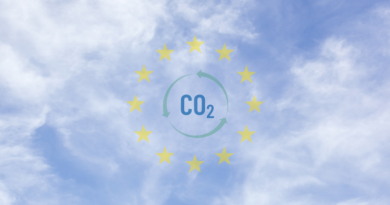
Strengthening Europe’s capacity to anticipate and respond rapidly to cross-border health emergencies
In the past 10 years, the world has witnessed some of the deadliest outbreaks of infectious diseases in modern times, including Influenza, Ebola and the Zika epidemics. Despite current knowledge, nations across the globe were under-prepared when COVID-19 struck and brought the world to a near halt in 2020.
COVID-19 will not be the world’s last public health emergency and some important lessons have already been drawn. Europe needs to be better prepared for future pandemics and other major health threats.
At the same time, the EU’s response to the evolving pandemic has included a wide range of unprecedented initiatives that were designed and delivered in record time. This, above all, saved lives, livelihoods and brought help to health services. The pandemic demonstrated the need and added-value for coordinated EU level action to respond to health emergencies. It also revealed gaps in threat assessment, preparedness and response capacities.
In November 2020, the European Commission tabled a proposal for a reinforced European Health Union, including strengthen mandates for both ECDC1 and EMA2, the two agencies that had been at the forefront of the EU’s response, as well as a new regulation on cross-border health threats.
But there were still key gaps to be addressed for the EU to be adequately prepared for the next health emergency. In particular, COVID-19 demonstrated the vulnerabilities that exist regarding the development, manufacturing, procurement and equitable distribution of medical countermeasures3 in the EU and globally.
This is why the Commission announced on 16 September 2021 the establishment of HERA, the European Health Emergency preparedness and Response Authority. This new service of the Commission is aimed as a common tool for the EU Member States, ensuring coordination among national initiatives. Action at EU level will allow mobilising critical mass investments while avoiding unnecessary duplications.
The core mission of HERA are:
- Strengthening EU health security coordination during preparedness and crisis response times, bringing together the EU Member States, industry and relevant stakeholders in a common effort;
- Addressing EU vulnerabilities and strategic dependencies related to the development, production, procurement, stockpiling and distribution of medical countermeasures;
- Reinforcing international cooperation and the global emergency response architecture.
HERA have different modes of operation during preparedness and crisis times. In the “preparedness phase”, it steers investments in strengthening prevention, preparedness and readiness for new public health emergencies by ensuring access to relevant medical countermeasures in case of need.
In the “crisis phase”, HERA will have stronger powers for swift decision-making and implementation of emergency measures. For that purpose, the establishment of HERA was accompanied by a proposal for a Council Regulation allowing for the activation of urgent and targeted medical countermeasures during public health emergencies in the EU.
These measures include the procurement and purchase of crisis-relevant medical countermeasures and raw materials, the activation of reserved industrial facilities for flexible manufacturing of vaccines and therapeutics, the establishment of a Health Crisis Board for rapid decision-making and the creation of monitoring mechanisms.
An agreement was found in Council at the end of December but its formal adoption is pending the finalisation of the Cross-Border Health Threats Regulation that is still under negotiation between the European Parliament and the Council, as part of the co-decision process. In this emergency phase, HERA will make sure key medical countermeasures are deployed rapidly and effectively.
These include purchasing the right medical equipment and getting the right medicines to the right areas as quickly as possible – similar measures that were enacted during the COVID-19 pandemic on an ad-hoc basis HERA’s mandate is to strengthen EU health security coordination, to face up to future health threats to our Union and as effectively and quickly as possible, in a common effort to prevent health crises and to swiftly and effectively respond to emerging or full-blown crises when, and if, they do arise. In practical terms, HERA will strengthen preparedness by first identifying and making sound investments in the development, manufacturing and stockpiling of medicines, as well as in the training of national experts, in order to face new public health emergencies with confidence.
HERA will also work closely with international partners to benefit for international efforts and create synergies with scientific and industrial powers, but as well to strengthen preparedness and response at global level, making sure that countries around the world are capable of producing vaccines, medicines and medical supplies in times of need.
As we all know too well now, a health emergencies that affects one part of the world can rapidly affects us all. Contacts are already taking place with the World Health Organization and in particular with the Hub for Pandemic and Epidemic Intelligence, recently established in Berlin. Cooperation schemes are being put in place as well with BARDA, the US model of HERA as well as with other equivalent agencies. In addition, besides the sharing of vaccines produced in Europe, HERA with the other services of the Commission and the relevant EU agencies, is supporting African partners for the development of local capacities for the detection and identification of threats, the monitoring of epidemics and the development of production capabilities in Africa.
__________________________________________________________________________________
1 European Centre for Disease Prevention and Control https://www.ecdc.europa.eu/
2 European Medicines Agency https://www.ema.europa.eu/
3 Medical countermeasures are products that can be used to diagnose, prevent, protect from or treat conditions associated with any kind of serious cross-border health threat. Examples are vaccines, antibiotics, medical equipment, chemical antidotes, therapeutics, diagnostic tests or personal protective equipment such as gloves and masks.




